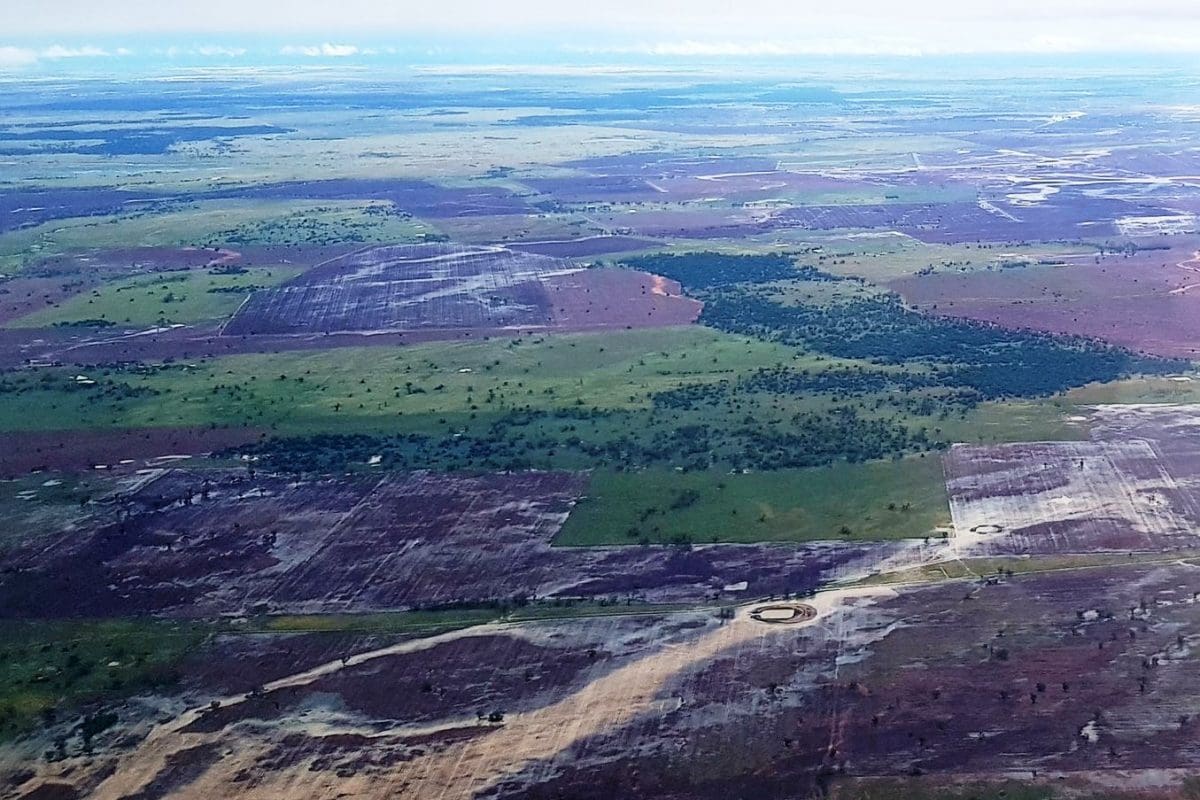
The Coonamble region in NSW has received welcome rain this week. Photo: John Pattinson, Goanna Ag
VALUES for feedgrain have softened in the past week in response to widespread rain in northern cropping regions and limited nearby domestic demand.
With the supply chain already groaning under the weight of a massive export program, traders and brokers are looking to the domestic market to absorb grain booked previously or being offered up now by growers.
Adding to supply-side pressure are growers selling grain to work in with backloads of fertiliser being accumulated ahead of the impending winter-crop planting.
Significant rainfall in recent days has fallen from central New South Wales to Central Queensland (CQ), and while some districts have registered little or no rain, many have had their best rain in months or years.
In southern Queensland, Bureau of Meteorology (BOM) registrations in the week to 9am today include: Dalby 73 millimetres; Jondaryan 54mm, and Roma 126mm.
In CQ, registrations include: Emerald 36mm; Clermont 170mm, and Springsure 71mm.
In NSW, registrations include: Coonamble 108mm; Moree 16mm; Mungindi 62mm; Narrabri 35mm, and Trangie 110mm.
| This week | Last week | Change | |
| Barley Downs Apr | $275 | $279 | Down |
| Barley Melbourne Apr | $255 | $255 | Steady |
| Barley Melbourne Jan` | $250 | $250 | Steady |
| Sorghum Downs Apr-May | $303 | $315 | Down |
| Wheat Downs Apr | $303 | $309 | Down |
| Wheat Melbourne Apr | $300 | $310 | Down |
| Wheat Melbourne Jan | $300 | $300 | Steady |
Table 1: Indicative prices in AUD per tonne.
Rain welcome
Rain has interrupted the sorghum harvest now taking place in southern Queensland and northern NSW.
However, growers are overall grateful for the rain, as it has fallen in time to improve yield prospects for later-planted sorghum, and is boosting the subsoil-moisture profile ahead of the winter-crop planting.
AgVantage Commodities managing director Steve Dalton said the northern market had softened considerably in the past week based on more grain coming forward, global values easing, and full export slots for the foreseeable future.
“More than anything, I think the market is a reflection of the supply chain,” Mr Dalton.
“The market is saying: ‘If you want me to take that wheat now, I’ll price it accordingly’.”
Mr Dalton said wheat prices had fallen further than barley, which had continued to attract steady buying interest from feedlots and others.
“Trying to line up bids and offers is a challenge; growers are chasing yesterday’s price.”
While sorghum volumes are not big, having the extra commodity in the supply chain is making a difference.
“Sorghum is back on reduced demand out of China, and on logistics issues and the ability to get it out of the country.”
Sorghum delivered Narrabri is quoted at $275/tonne, down from around $310/t early last week.
“Now the supply chain is on the go for sorghum, we’ve seen the price come back.”
One nearby bulk part-cargo of sorghum is booked to load in Brisbane this month, and the sorghum export market is otherwise reliant on containers.
These are in short supply nationally, and sorghum is now competing against mungbeans as and chickpeas as higher-value commodities.
If sorghum values fall another $40/t or so, it can be expected to start to displace white grains in pig and poultry rations.
ICM advisor Andrew Cottle said softer global values coupled with rain in NSW and Queensland had impacted grain prices.
“There’s weakness offshore, and the rain as well has put a dampener on wheat and barley prices,” Mr Cottle said.
“Getting it to port is problematic.
“It’s tough to put a lot of trucks into terminals, and we’ve got a lot of grain this year.”
Forecast prompts sales
BOM has forecast 15-50mm across the eastern Australian grainbelt by the end of next week, and 50-100mm for much of northern NSW.
Melaluka Trading director Mick Fitzgerald said the Victorian ports were flat out executing “an enormous amount” of grain.
“The cash markets feel softer, and there’s not a lot of new business being done.”
Mr Fitzgerald said exporters were having enormous difficulty in getting enough containers to fill orders.
“They’ve never seen anything like it.”
The ongoing problems around boxes continue to limit the amount of grain packers are booking.
This is pushing more grain direct to ports.
“Rain on the horizon right through the east coast on the forecast, and growers are shifting grain out of silo bags ahead of it.
“That’s softening the cash market a bit too.”
Mr Fitzgerald said fertiliser continued to be in short supply out of Victorian ports, and growers wanting to book a load or two were in some cases accepting reduced prices for wheat and barley in order to get the backload.
“That’s adding to the pricing complex.”



HAVE YOUR SAY